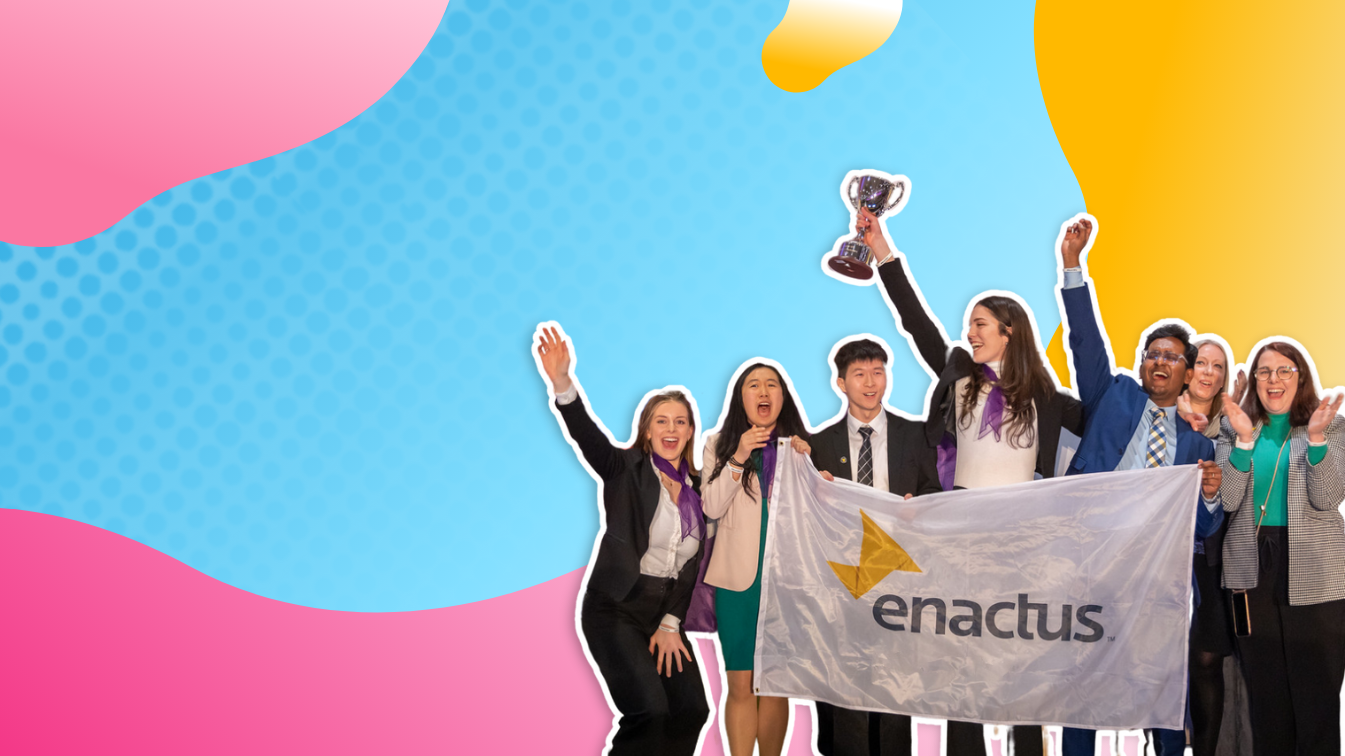
Preparing an Enactus Pitch

Pitch Structure
Whether you’re competing in the opening round of competition, or the final of the Enactus World Cup, all Enactus pitches follow the same criterion and timings.
5
min
Q&A
12
min
Presentation
Write a Script
Why write a Script?
It may seem like a strange concept to write a script for a presentation, but this isn't just any presentation!
This is a presentation that could potential be the difference between you being announced as the Enactus UK & Ireland Champion or simply impressing the judges enough to potentially gain funding, mentoring, and even a job offer!
With limited time, you want to be concise, impactful and tell the judges exactly what you want them to know - if you exceed 12 minutes, you will be cut off. Write a script keep to time and don’t adlib!
Tips
PRACTISE PRACTISE PRACTISE
Bring cue cards: even if you don’t use them, it can help to know that you have your script to hand, and you are not penalised for using them (just make sure they are numbered and secured).
Consider using a conductor: this can help ensure you keep to time to videos and can help you slow down / speed up so that you are speaking clearly to the audience.
Use the Enactus Criterion
Your ultimate goal is to show how your team has best met the judging criterion.
For judges, the experience is both incredibly rewarding and daunting. Multiple presentations means lots of information is thrown at them.
In short: the easier you make it for the judges to understand where and how you have hit the Enactus criterion, the better! This might look like integrating some of the language used on the judge’s Individual Team Evaluation Forms (ITEF) into your presentation script. For example:
We used entrepreneurial leadership and identified [the need] within our community
We innovated around existing processes by X.
We have ensured the financial sustainability of our project by X.
Our project demonstrates a measurable lasting impact on people, planet and prosperity by X.
Entrepreneurial Leadership
How have you identified a need?
How have you managed risk?
How have you managed change in a dynmaic environment?
Innovation
How have you improved on existing services or technologies?
What have you done differently from other services already available?Use of Business Principles
How is your project financially sustainable?
How have you applied a sound business model?Sustainable Positive Impact
How have you demonstrated a measurable lasting improvement for:
People?
Planet?
Prosperity?
Tips
Use the ITEF forms “greensheets” to ensure that you have met all aspects of the criterion (you can find a copy of the ITEF HERE).
Make it easy for the judges! The simpler it is for them to where you hit the criterion, the better!
Which Enactus team most effectively demonstrated entrepreneurial leadership to drive business and innovation for sustainable positive impact to benefit people, planet and prosperity within the last year?
(April 1st 2024 - April 1st 2025)
Which Project(s) to Present?
Whether you have a large portfolio of projects, or just one, you can present as many as you wish in the Enactus competition. World Cup teams have presented, one, two or more projects and won!
However, the number of projects you present does not influence the amount of time you have to pitch. In most cases, it is probably better to cover fewer projects in sufficient depth, than cover more superficially.
Again think about the judging process - does presenting more projects help you demonstrate that you have hit ALL aspects of the criterion?
Storytelling Effectively
Understand your audience: Some judges may have been part of an Enactus competition before, or be familiar with your project, but for most this is the first time they will be hearing about you.
Broadly, judges might fall into two categories: those who think with their head, and those who think with their heart.
What is a “head” judge looking for?
Data-led reasoning and clear arguments.
Clearly structured presentations with a logical flow.
Measurable, quantifiable results, such as specific numbers, statistics, and comparisons.
A head judge wants to KNOW why your project is important.
What is a “heart” judge looking for?
Emotional Connections: stories, anecdotes, and personal experiences that illustrate the project's significance.
Passion, conviction and belief in the project.
Qualatative impact, on people and the wider society.
A heart judge wants to FEEL your project matters
Tips
Consider your “message”: What do you want the judges to KNOW and FEEL?
Be Authentic: Tell real-life stories to build trust. Where appropriate, using beneficiaries to tell your story is an effective and authentic way to demonstrate the impact you have had on them.
Use a conversational tone: Speak in a conversational tone as this will sound more natural and friendly. To help with this pretend that you're telling the story to friends or family and simplify your messaging.
Be visual: Use your presentation or video to support your messages. Reinforce with pictures, graphs, iconography - whatever helps to simplify and make your story more powerful.
Approaching the Q&A Section
After your presentation (and hopefully lots of applause), your Q&A time begins.
This is often the most daunting aspect of an Enactus pitch, because you can’t control what the judges may ask you about, however that doesn’t mean you can’t prepare effectively for the Q&A, so relax, breathe and know that you’ve got this!
Tips
Questions are asked out of curiosity: they’re not designed to intimidate or hurt you, so assume good intentions and
What are the questions you don’t want to be asked? Practice them ahead of time! Think of three you’d hate to answer and work to answer them effectively.
Divide questions and practised answers amongst your presenting team: Who will cover finances? Impact? Future plans? Have experts in your team who will tackle each area you could be asked about.

